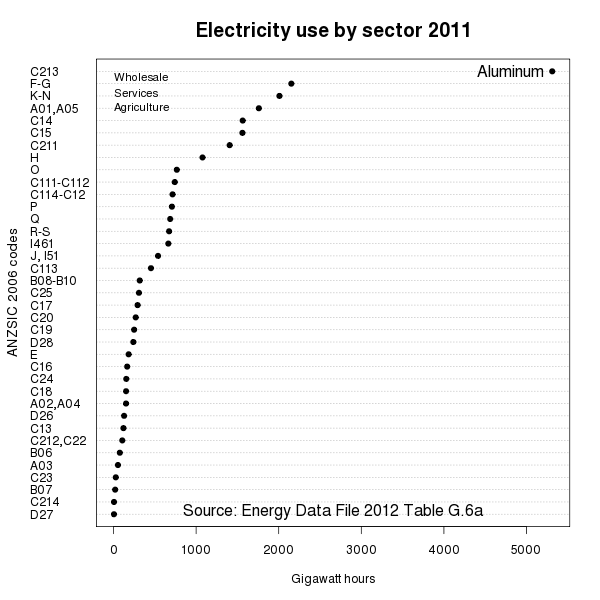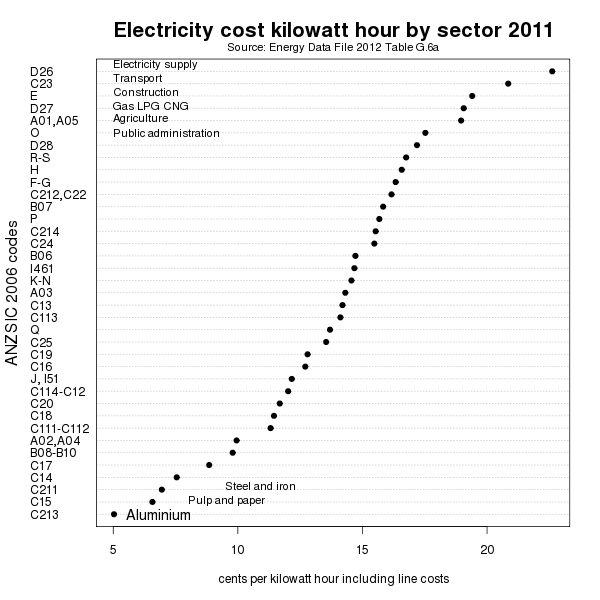 Today I was absolutely gobsmacked by a statement by Steven Joyce, the New Zealand Minister of Economic Development, in an official New Zealand Government press release.
Today I was absolutely gobsmacked by a statement by Steven Joyce, the New Zealand Minister of Economic Development, in an official New Zealand Government press release.
Joyce explicitly took the side of and promoted the cause of Australian coal miners, Bathhurst Resources, in two up-coming court cases.
"The Escarpment Mine is an open cast mining project that is ready to go and would provide 225 jobs and incomes for workers and their families on the West Coast straight away. The developer is being held up from opening the Escarpment Mine by on-going litigation that has gone through the Environment Court, the High Court and the Court of Appeal. These on-going objections are to resource consents which were granted more than a year ago. The whole consenting process for this development has now taken a staggering seven years. I call on those objectors to the mine to reconsider their appeals and consider the economic future of the West Coast and its people."
I know Joyce is very pro-development, Joyce even has his own archive of posts on the Hot Topic blog, where Joyce's preference for fossil fuel developments is obvious.
But this time he has crossed a line. Joyce is using his position as a Minister of the Crown to explicitly try to influence decisions yet to be made by the New Zealand Environment Court and the New Zealand Court of Appeal on the resource consents sought by Bathurst.
Joyce is breaching the Sub judice rule.
Let me back up and start at the beginning. The resource consents for Bathurst's open cast Escarpment mine proposal were applied for in August 2010. Not seven years earlier as alleged by Joyce. Bathurst took over the project from L and M Coal Ltd.
In August 2011, the hearing commissioners acting for the West Coast regional and district councils considered with some anguish that resource consents could be approved.
This was in spite of the many adverse effects on native species habitat, water quality and the coal-measure limestone landforms within the Mt Rochfort Conservation Area. Yes the proposed mine is within a conservation area. The commissioners refused to factor in climate change effects from the eventual release of carbon dioxide from the coal. In other words, it was a pretty marginal decision.
However, the resource consents are not legally granted, as environmental NGOs Forest and Bird and the West Coast Environmental Network immediately lodged appeals with the New Zealand Environment Court. This is Joyce's second factual error; in an appeal of a resource consent, the council's decision ceases to exist. The Environment Court starts from a blank piece of paper, examines the facts and makes it's own decision. It considers consent appeals on a 'de novo' basis.
Then Bathurst started the cycle of litigation - by applying to the Environment Court, separately from the consent appeal, to have the effects of climate change barred from the consent appeal. Bathurst succeeded. So Forest and Bird and the West Coast Environmental Network appealed that decision to the High Court. Bathurst won that appeal. However, Forest and Bird and the West Coast Environmental Network have appealed the High Court decision to the Court of Appeal.
So there are two court hearings yet to happen.
1. The Environment Court is yet to decide on the facts; if the resource consents 'promote sustainable management' of resources as required by the Resource Management Act and may be granted.
2. The Court of Appeal is yet to decide on the law; whether it permits or prohibits the Environment Court considering the greenhouse effects of the carbon dioxide emissions from the downstream combustion of the coal.
Now Steven Joyce, a Minister within the Executive branch of Government, is expressing an opinion on what the outcome of the Court's process should be.
This is contrary to the 'sub judice' rule; which is simply speaking "Don't comment on undecided Court cases".
Or as set out in Parliament's Standing Order 112.
"112 Matters subject to judicial decision
(1) Matters awaiting or under adjudication in, or suppressed by an order of, any New Zealand court may not be referred to in any motion, debate, or question, including a supplementary question, subject always to the discretion of the Speaker and to the right of the House to legislate on any matter or to consider delegated legislation."
Or as set out in the Office of the Clerk of the House of Representatives document "Sub judice rule". Chapter 16 in 'Parliamentary Practice in New Zealand'. New Zealand Parliament (14 October 2010).
"The Standing Orders prohibit reference in any debate to any matters awaiting or under adjudication in a court from the time the case has been set down for trial or otherwise brought before the court, if it appears to the Speaker that there is a real and substantial danger of prejudice to the trial of the case...This is the implicit acknowledgment by the legislature that the proper forum in which to resolve legal disputes is the courts and that the legislature, above all other institutions, should take extreme care not to undermine confidence in the judicial resolution of disputes by intruding its views in individual cases...The House's sub judice rule takes effect in criminal cases from the moment a charge is made and in other cases from the time proceedings are initiated by filing the appropriate document in the registry or office of the court."
Or as set out by the Speaker, Margaret Wilson, on 16 October 2007, in "Speaker's Rulings Sub Judice Rule Operation.
"It seems to me that it is important in any consideration of it to emphasise the high constitutional nature of the rule. It stands as an expression of the relationship between the different branches of government; the legislative branch and the judicial branch. This House determines what the law should be, but it is for the courts to determine in each particular case how the law is to be applied. In criminal matters, it is not for this House to decide guilt or innocence. That is a matter for a court of law."
Obviously, Joyce and the rest of the National Government just don't give a stuff about anything of a high constitutional nature or the rule of law, or Joyce driving his Bagger 2000 coal excavator through the 'sub judice' rule. Clearly such things are just the concerns of those pesky people who obstruct progress when government tries to remove roadblocks in the way of business development.
Even not-so-stellar Minister of Energy Phil Heatley knew better than to comment on the Bathurst Environment Court appeal when he was asked about it on a Q and A interview.
"Well, you appreciate, Shane, this is before the courts. I'm a bit limited about how much I can discuss this. But the reality is Denniston, like any other application, has to go through a process, and there is a balance between the economic benefits and the- what impact it'll have on the environment."
Kevin Hackwell of Forest and Bird has responded promptly to Joyce's call and raised the issue of how independent other decision making may be, such as the Minister of Conservation's decision to grant Bathurst access for mining in a conservation area, which is also yet to be made by the Minister Kate Wilkinson.
"There would be a serious question, given his public advocacy, about whether such a decision has been influenced by government policy."
That's an important point. Especially since the Government wants to make stop the Minister of Conservation making the decisions on mining access to conservation areas on the basis of conservation purposes.
The Government has just introduced amendments to the Crown Minerals Act which add the Minister of Energy as joint decision-maker and add economic matters to the mandatory conservation purposes the Minister of Conservation must consider.
We will have to see how this 'sub judice' breach plays out for Joyce, given his party and Prime Minister have no problem with John Banks and his unknowingly non-anonymous donations.
However, I could not think of a better reason to reject the proposal for mining access over conservation land to be a joint Ministers decision based on economics and conservation criteria, than Steven Joyce's attempted interference in the Environment Court and the Court of Appeal cases concerning the Escarpment mine.


 Robin Johnson's Economics Web Page argues that Rio Tinto-owned New Zealand Aluminium Smelters Ltd, the owner of the Tiwai Point aluminium smelter, is "Godfathering" the smelter, its workforce, the Southland economy, the NZ electricity market, Meridan Energy and the poor critically endangered slow-breeding kakapo, as well as "Godfathering" the NZ emissions trading scheme to get excessive free allocations of emissions units.
Robin Johnson's Economics Web Page argues that Rio Tinto-owned New Zealand Aluminium Smelters Ltd, the owner of the Tiwai Point aluminium smelter, is "Godfathering" the smelter, its workforce, the Southland economy, the NZ electricity market, Meridan Energy and the poor critically endangered slow-breeding kakapo, as well as "Godfathering" the NZ emissions trading scheme to get excessive free allocations of emissions units. And NZ Aluminium Smelter also wants to
And NZ Aluminium Smelter also wants to 


